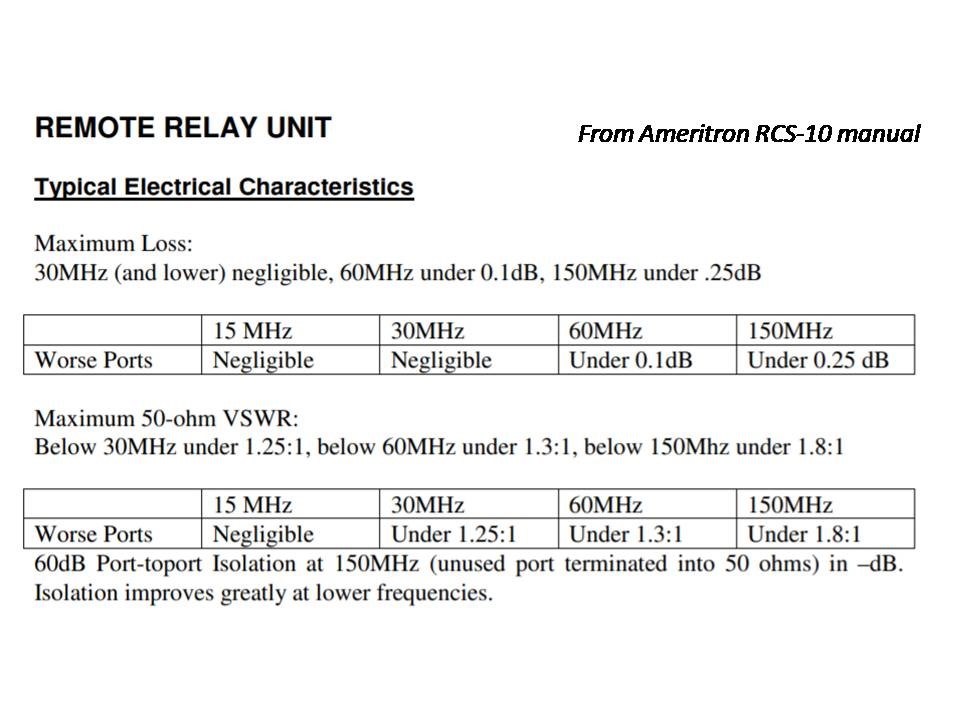When it comes to ham radio, one radio is never enough. The same thing goes for antennas–multiple bands usually mean multiple antennas. Soon, you’ve got a maze of coax connections that need to be run from one device to another. Coax switches can help create order and make the connections you need, as well as help to protect your equipment.
Mechanical Switches
The most plentiful and least expensive of the coaxial switches are mechanical, operated by hand with a knob. The most basic one is the A/B switch, with one input and two outputs, A and B. Using this type of switch, you can manually select which output will be fed, like a radio and two antennas. Examples include the Daiwa CS-201A and Diamond Antenna CX-210A.
In many cases an A/B switch can also be used in reverse, selecting between two inputs to feed one output, such as two radios sharing one antenna. However, be warned! You need to consider the possibility of RF finding its way into the unused transceiver. Be sure to verify that the switch’s isolation between the two transceiver inputs is at least 50 dB–more is always better. Also check to see that unused connections are automatically grounded by the switch to bleed off any stray signal.
Variations of the A/B switch may include three or more outputs, suited for multiple antennas or radios. The Diamond CX-310A has three outputs and is usable into the UHF range with minimal insertion loss. The Alpha Delta 4B features four outputs, while the MFJ 1700C offers six outputs and six inputs.
Relay Switches
Instead of using manual rotary switches, several desktop switch designs incorporate relays. They can be triggered by a number of interfaces, including pushbuttons, rotary switches, toggle switches, computers, and some transceivers. Relays tend to be more reliable and can handle high power.
The Hamplus AS-603A and AS-603AL are both automatic and manual switches. They incorporate illuminated indicator pushbutton switches along with independent band memory and band data interface capabilities for up to three different radios and six different antennas. These intelligent band decoder models are compatible with Elecraft, Kenwood, Icom, and Yaesu transceivers.
MFJ’s 4726 Desktop/Remote 6-Position Antenna/Transceiver Switch is a multifunction device that will switch up to six 50-ohm antenna systems to six transceivers in any combination. Its sealed relays offer connection reliability. When it’s turned off, all inputs are automatically grounded. Essentially, it’s two MFJ-4716s in a single box.
Remote Antenna Switches
Remote switches are a great choice for those who have numerous antennas, especially on a single tower. On the plus side, you’ll reduce the number of coax runs from the shack to the various antenna locations rather than using separate runs of premium coax to each individual antenna. They provide considerable savings in coax costs and less cable clutter in your shack.
It’s easier to experiment with new or temporary antennas since you can connect to a spare connector at a remote switch rather than run a temporary coax line all the way back to your radio.
Since all cables route through one common point that can be grounded, lightning protection is significantly better than using multiple coaxial lines into the operating position. If an electrical storm heads in your direction, all unused antennas have their coax feeds shorted to ground at the remote switch boxes–before anything reaches the house.
RR8B-HP Remote Antenna Switches from DX Engineering can be used as conventional eight position switches or configured to simultaneously select multiple output ports, allowing their use in complex antenna phasing and stacking systems. A DXE-EC-8 control console or the DXE-CC-8A control console (both sold separately) is needed with the RR8B-HP.
Ameritron’s RCS-10 Remote Coax Switch is a budget-conscious solution to remote antenna switching and will accommodate up to eight HF antennas. It comes in a package with the controller included.
When installing, here are two tips to consider:
- Keep the switching enclosure close to ground level where you can reach it in the event of any issues. Though it may be tempting to install it close to the antennas, the cost of a little extra coax is minor compared to the inconvenience of climbing a tower.
- When plugging in the cables at the switch, be sure to add a drip loop to each cable to divert moisture away from the switch.
Get the Good Stuff
Avoid lightweight switches with sloppy switch mechanisms. A solid mechanical feel is usually an indicator of good internal construction. Also make sure there’s a clean break/make connection when switching positions. You don’t want one that’s still connected to A when you’re switching to B.
Power handing capability is often important in selecting the right device. If you use continuous modes like AM and digital, be sure the rating of the switch meets or preferably exceeds your peak signal output. How much power a switch can handle depends on the mechanical design, materials, and connector type used.
There are two important parameters you should look at when selecting a coax switch: insertion loss and isolation. Insertion loss is the total power lost through the switch in its on state. Isolation is a measure of how effectively the switch is turned off–the isolation between the input and output ports of the circuit. The better the isolation, the less signal will be getting into other transceivers sharing the switch.
Grounding of the unused connectors is an important safety feature. Many low-end antenna switches do not ground the unused connections, so check before you buy. As a general rule, any grounding done to improve lightning protection also improves RF grounding and reduces unwanted RF interference.
Don’t always believe the specs you read. I saw one switch that claimed a usable frequency range from DC-1000MHz (1 gigahertz!). Most good units will cover the HF frequencies and VHF frequencies with some additional insertion loss at VHF. Losses and SWR go up with frequency. See the chart below from the Ameritron RCS-10 as an example.


